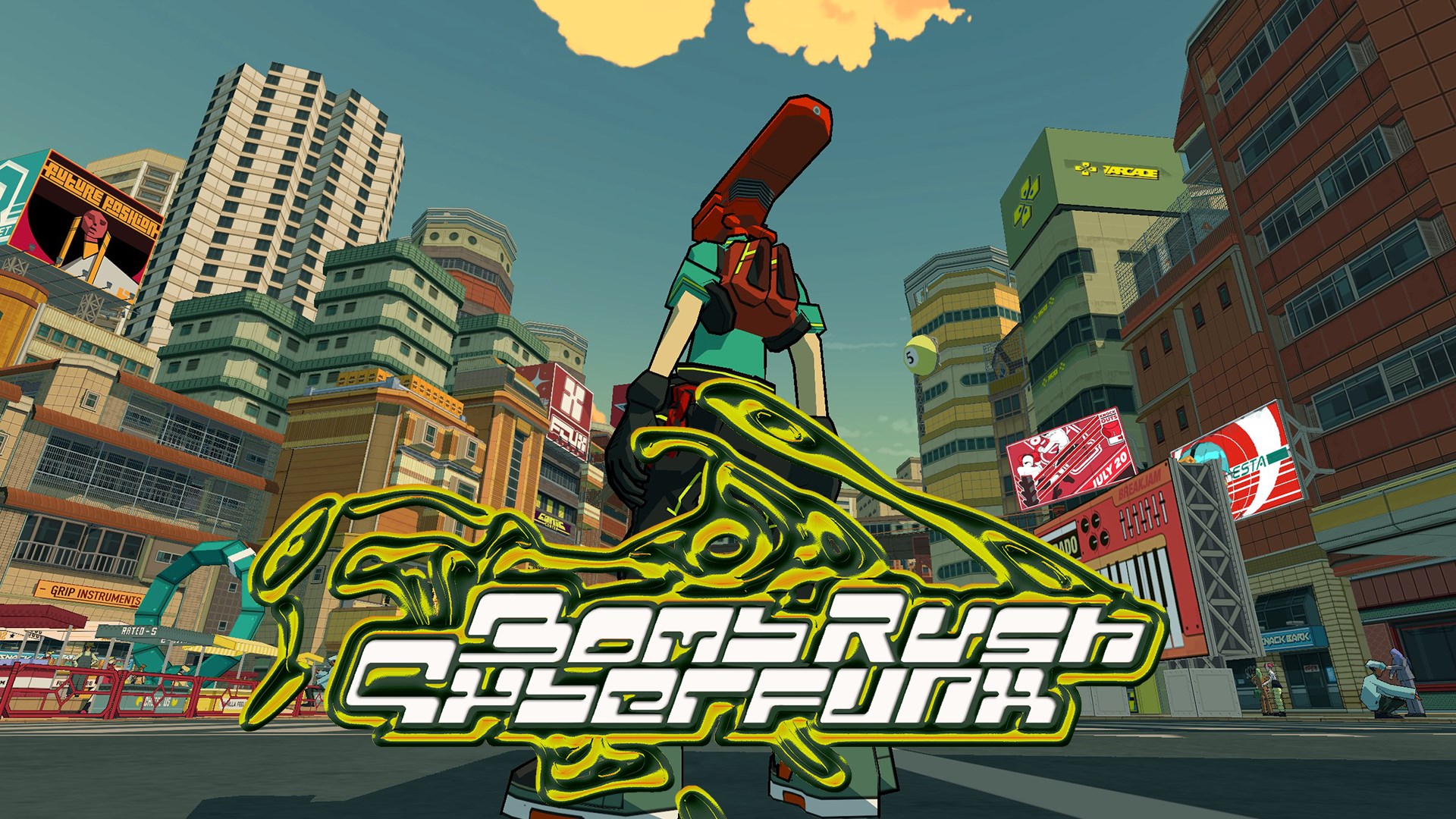Bomb Rush Cyberfunk
Before I begin the review, full disclosure. I have not cleared Bomb Rush Cyberfunk yet at the time of this review. There's a plethora of content to explore all BRC has to offer and according to my Steam time, I clocked in at around six hours until I finished the first borough. Yes, I said "borough" and not "district."
While the setting isn't "New York," "New Amsterdam" is about as close to the Big Apple as, say, New Radius perhaps? While there's enough difference between Marc Ecko's Getting Up and Bomb Rush Cyberfunk to be two separate titles, the overall goal to go "All City" is still tied to hip-hop and graffiti culture.
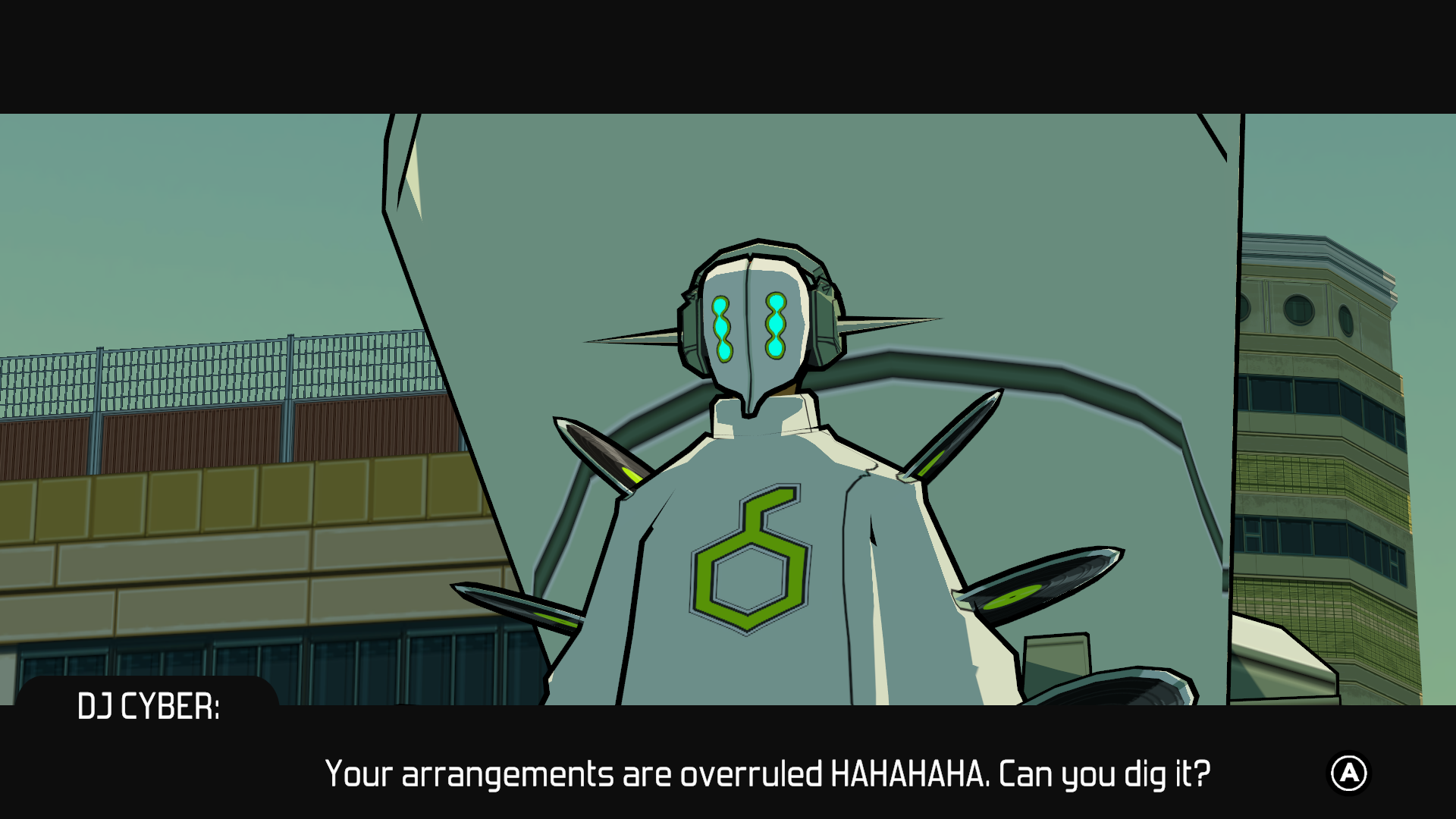
The second disclosure is that I am arguably Team Reptile's biggest fan right now. Not only had they created what many fans of this type of genre wanted with extreme success, but I was also given the chance to review this game and give my early thoughts thanks to the team. So a huge special shout out to Team Reptile for showing us love, as they are well aware in my pitch email how much of a fan I was of Jet Set Radio, but also their previous endeavor, Lethal League Blaze.
Players won't need to play Lethal League Blaze to enjoy Bomb Rush Cyberfunk as the two plots are relatively self-contained. Certain characters appear to be based on Lethal League Blaze, such as Bel and Vinyl looking similar to Jet and Sonata respectively.
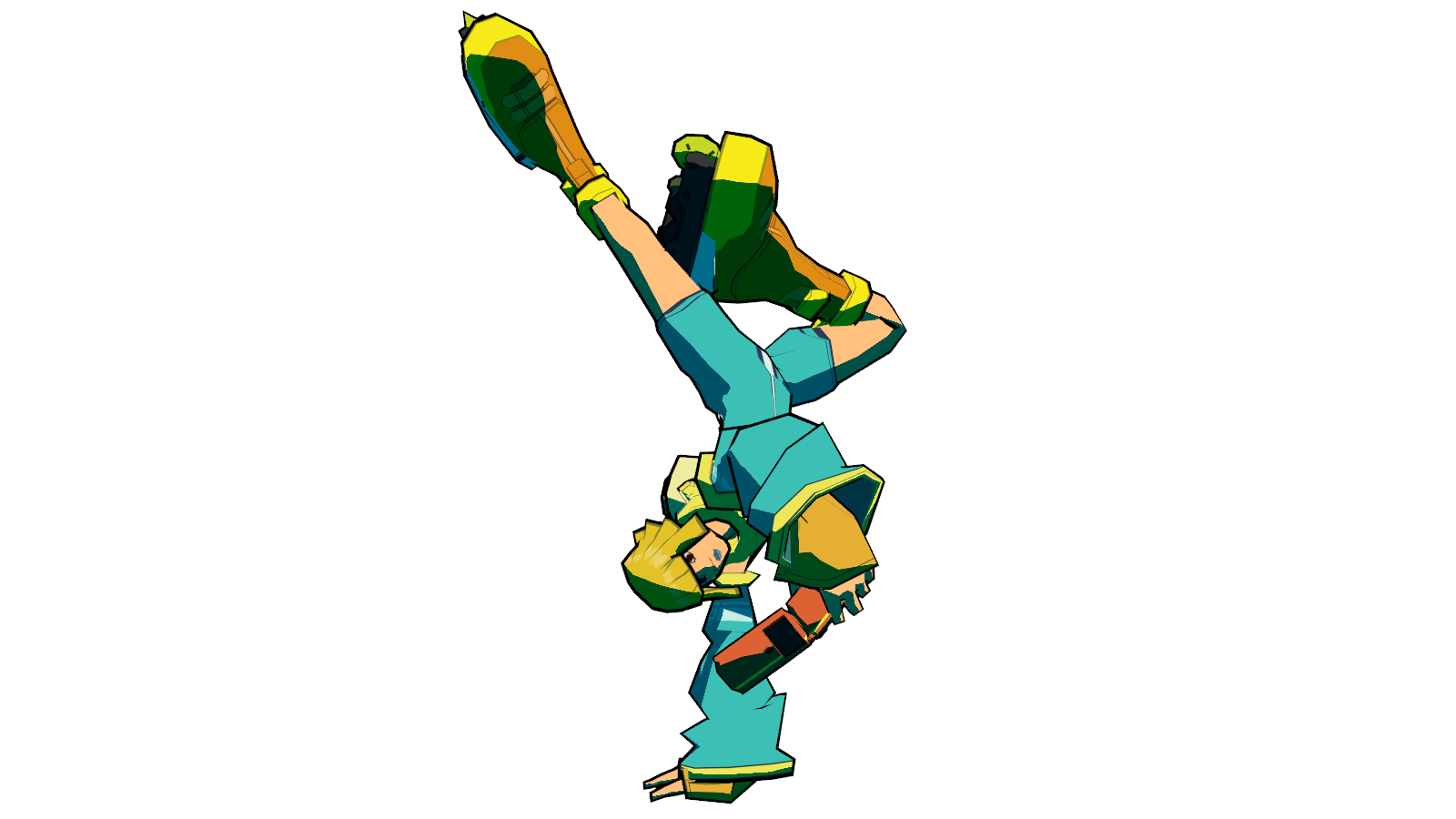
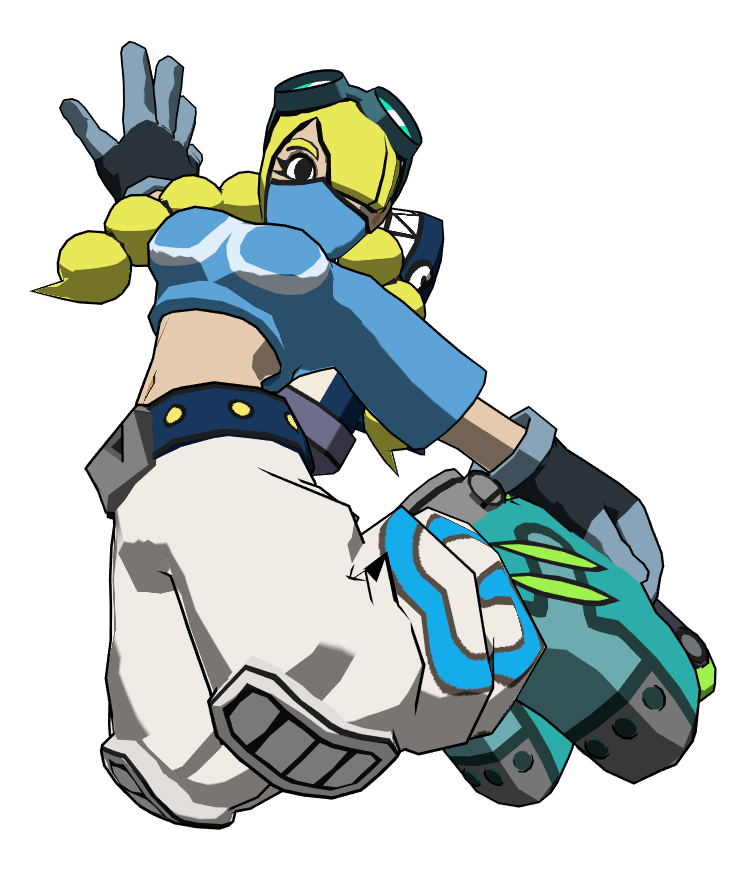
Our story begins with an inmate who is helped out of prison by a tagger named Tryce. The player quickly finds out that the inmate's name is Faux, one of the Big 3 of New Amsterdam. After successfully breaking out, a mysterious entity decked out with razor-sharp vinyl records, DJ Cyber, decapitates Faux without much explanation at first. However, before the player can feel the effects of a lost head, they wake up at the hideout fitted with an entirely new head.
Now, usually, when you lose your head, you die. In Bomb Rush Cyberpunk, cybernetics is the norm, as is shown by the many eccentric characters featured in the game. No longer Faux, the player becomes Red, named after his mechanical head, effectively turning him into a cyborg.
Together, he joins Tryce and Bel as a part of the Bomb Rush Cyberfunk crew, or BRC for short. The goal is to find Faux's missing head, while also realizing that going "All City" lines up with that very same objective. Going "All City" is a graffiti term for a tagger to become known in all five boroughs of New York. Again, New Amsterdam, and each "borough" is a new district with its own gimmicks, tags, and crews to defeat.
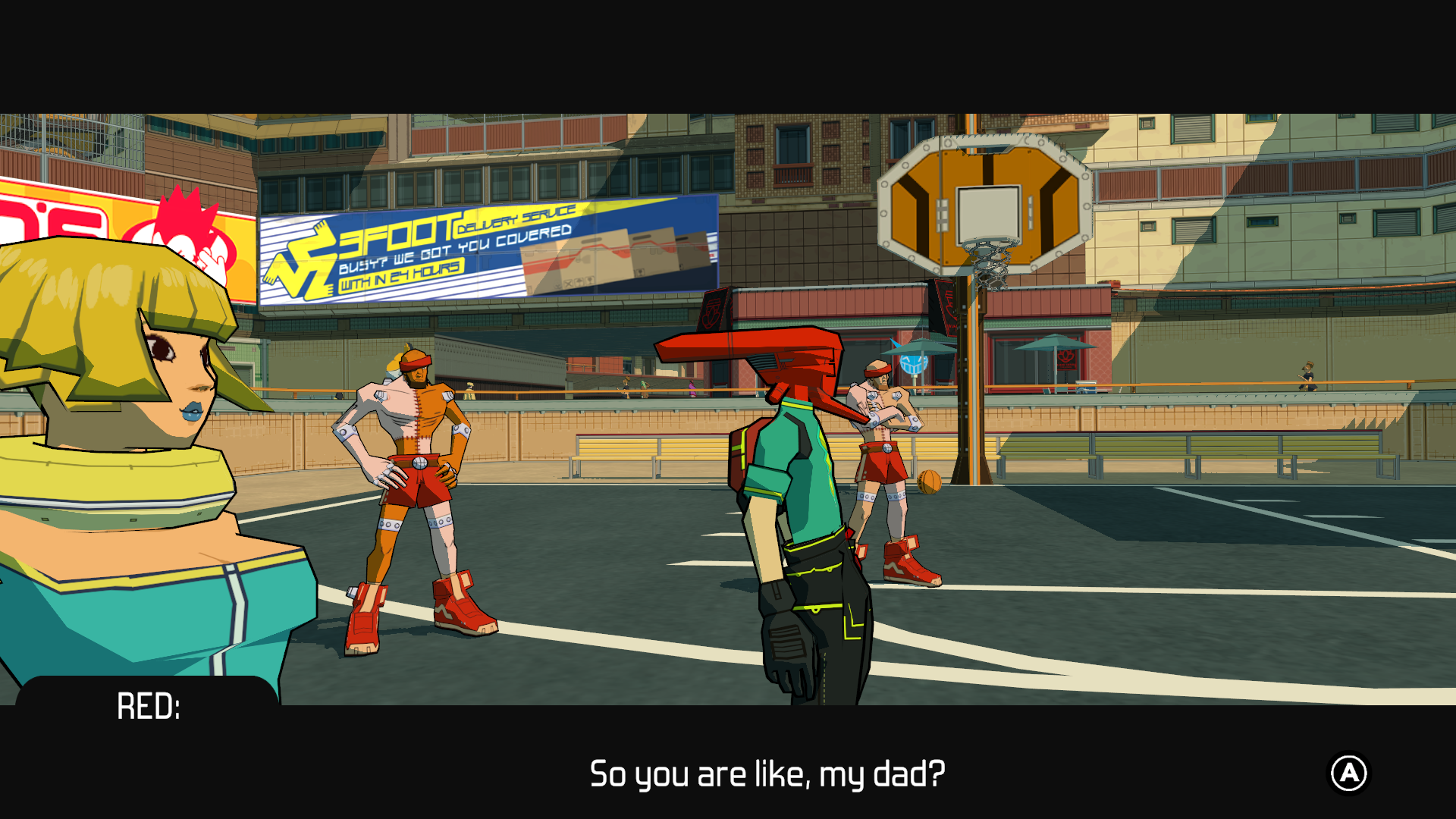
There's an expansive open world in Bomb Rush Cyberfunk where players can move seamlessly in between as they unlock more levels and conquer more boroughs. It's here that Bomb Rush Cyberfunk oozes with charm as the cel-shaded-inspired graphics are stunning. I spoke praises of Hi-Fi Rush for this same reason, so it's a safe bet to say that "cel-shaded graphics" are an aesthetic that's synonymous with "absolute style."
This game was partially created as a love letter to Jet Set Radio but make no mistake, there are a number of things this game improves on from the iconic Dreamcast series. One such inclusion that was featured in the remastered version of Jet Set Radio is the camera control. While it would be nice in a future update to allow players to manually adjust the FOV for a better view of the tagger, the camera does a decent job at following the player's actions.
There are two "styles" of gameplay which are on-foot and what I'd like to call, "transportation" mode. By default, Red and the rest of the crew can run, jump, and do various parkour tricks. Everything the player does adds to their combo meter and there are three varying "strengths" of tricks. Think of each trick as a fighting game attack. There are light tricks, medium tricks, and heavy tricks that each require a certain rhythm to chain together. This is similar to how Jet Set Radio Future handled tricking, but tricking in Cyberfunk can be done in the air, on rails, or on flat land.
Losing momentum and bonking rails are some of the few blemishes the original Jet Set Radio games had, but Cyberfunk eliminates this with several quality-of-life changes. The player can "double jump" after every air-to-air interaction, including wall rides. That, combined with a boost that refills as the player increases their combo, makes it easier to travel great distances. Finally, reaching the dreaded "end-of-the-line" of a rail, which leads to the inevitable bonk, is remedied by the player automatically rebounding off a rail in the opposite direction. These are subtle improvements to the original JSR formula but are much appreciated in a modern sense.

The second mode lets the player use either a skateboard, a BMX bike, or aggressive skates. These usually depend on the tagger as each has its own unique style. While they all serve the same purpose, each transportation feels unique. A skateboard doesn't feel the same as a pair of aggressives nor should they, but because everything is consistent, players can pick and choose to their liking as they open up more of New Amsterdam.
By default, Red has a skateboard, Bel has aggressive skates, and Tryce has a freestyle bike. As players defeat more gangs and progress through the games, more characters will join Bomb Rush Cyberfunk as well as existing characters being able to use other transportation gears outside their default choice.
Tagging, the most important part of Bomb Rush Cyberfunk, combines the ease and portability of JSRF and the interactivity of JSR. To tag, the player needs to move the left analog stick in a certain pattern in order to complete a tag. It's a lot of moving the analog stick in a frantic motion, but each grafitti tag has a unique pattern with more needing to be discovered through completing challenges. This can also be done during a combo and can even extend the multiplier by giving the player that much-needed bonus score.

The music is also a treat, with artists ranging from Hideki Naganuma and 2 Mello, to others who helped provide the original score for the game. Each borough has its own playlist but the player can unlock individual songs as they explore New Amsterdam. Bomb Rush Cyberfunk's soundtrack is sample-based hip-hop with ample enough breaks to assist in breakdancing on enemies. Here's the only major drawback I have with this game. The combat.
Occasionally the player will have to get rough with the NAPD. These fights are closed off and usually deal with an enforcer who fights alongside backup. The fights aren't bad, but a lock-on mechanic is desperately needed. There are many times when I lose track of who I'm supposed to be fighting, but the arenas are small enough that I always have visuals. However, attacking her is rolling the dice on whether my attack will land or not. A boost attack is usually enough to defeat her, but the more trouble the player causes, the higher their heat level increases. They don't throw the choppers at you immediately, you gotta earn it.
Speaking of earning, there are a lot of bonuses and secrets for players to explore. Some of the challenges may lead to special spots that reward the player for going out of their way. Players earn rep points by going over rival crews' tags which are then settled with a "team vs. team" showdown. This usually means "Beat the team in a boss battle," but it's not always the case.
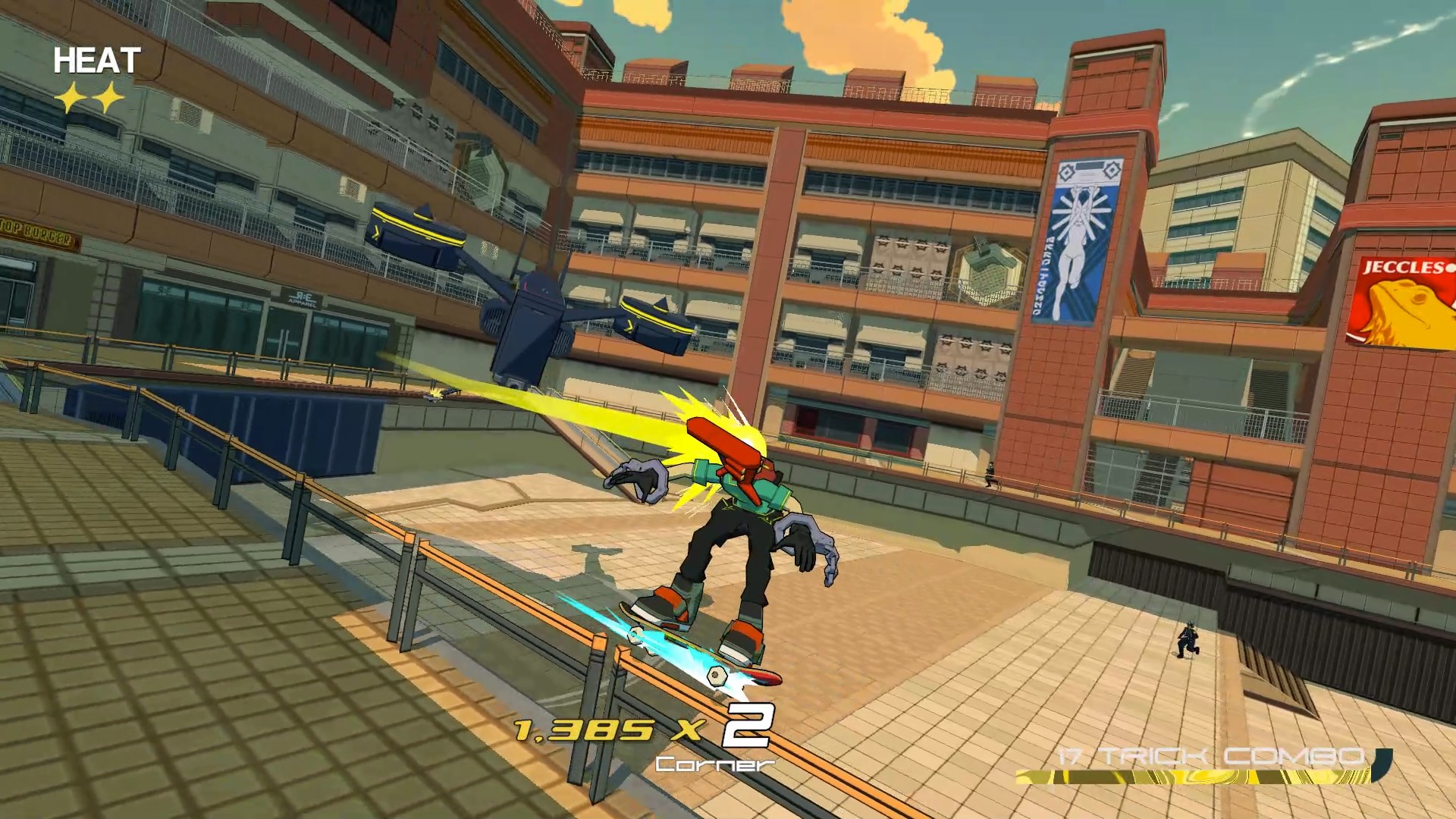
I can sit here and talk about Bomb Rush Cyberfunk, but that's the time taken away from both of us that could be spent playing Cyberfunk. Aside from the camera and fighting enemies, this game is the spiritual successor to the Dreamcast and Xbox classics that fans were waiting for. Anyone who has had doubts about the authenticity of Bomb Rush Cyberfunk; absolve all fears. This is easily my favorite game in a very long time and is a contender for the rest of 2023.
Bomb Rush Cyberfunk is now available on the Nintendo Switch and Steam. PlayStation 4 and Xbox One versions will be released at a later date.

